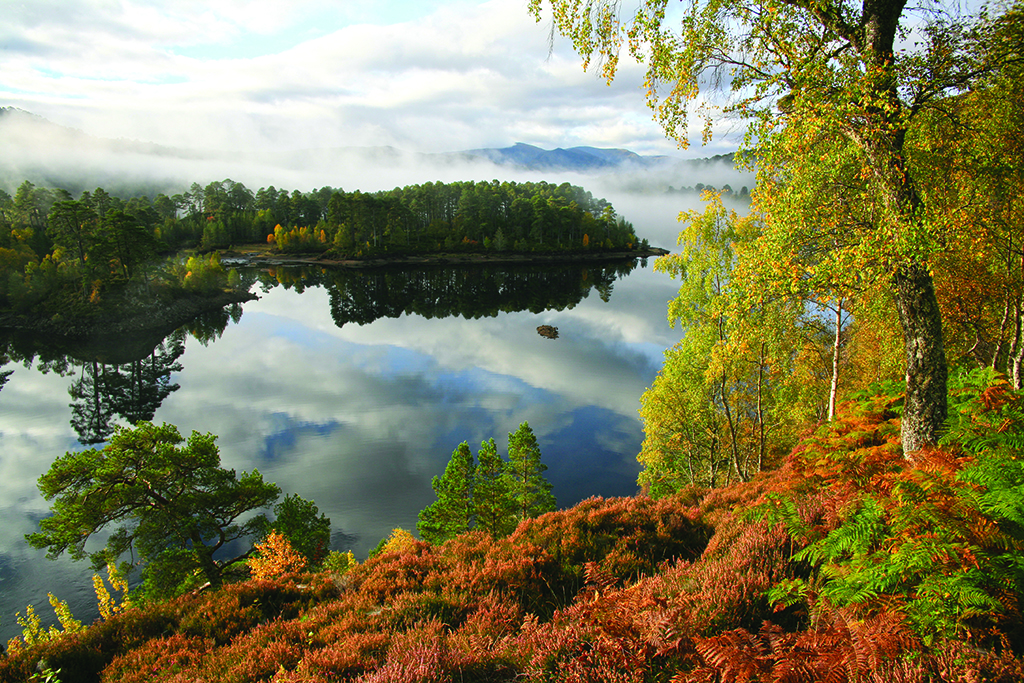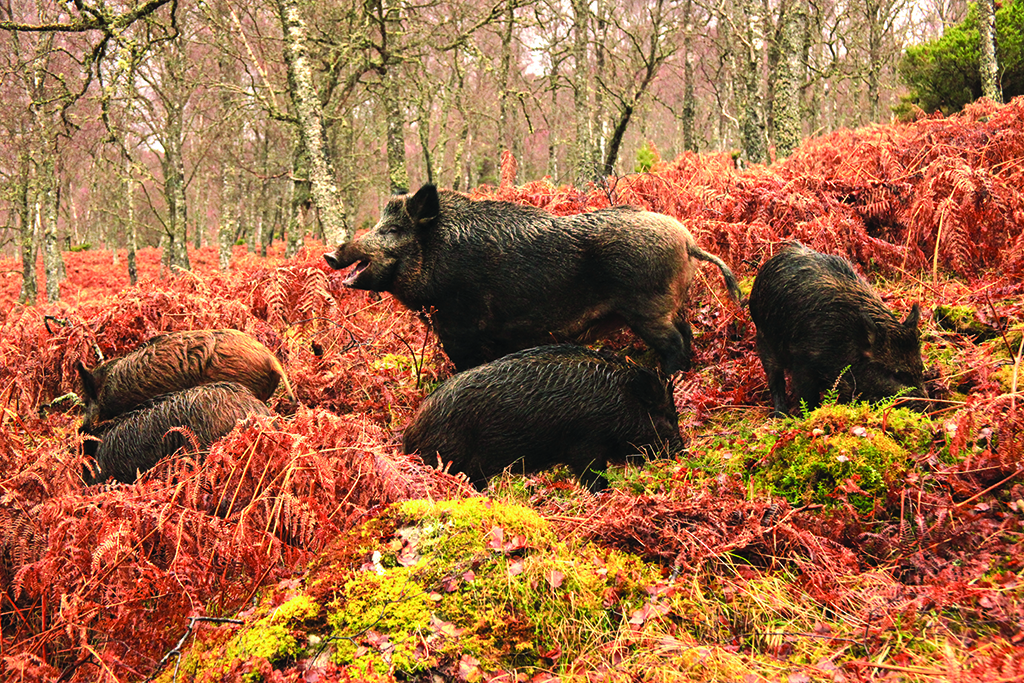
Take a bough to restore the Caledonian pine forest
Through his Trees for Life project, Alan Watson Featherstone has made it his life’s work to restore Glen Affric’s ancient pine forest.
There’s a certain irony to meeting Alan outside the massive Vue Cinema in Inverness, for the city’s sprawling urbanisation is a far cry from the conservationist’s usual habitat.
Featherstone has been at the forefront of the Findhorn Foundation’s important nature work since he joined in 1978, and firmly believes that plants, like everything else, respond to a positive atmosphere. While this may seem a bit of an airy-fairy concept, I am willing to be persuaded.
We are heading to Glen Affric, regarded as one of the most glorious glens in Scotland. I first visited Glen Affric in the 1970s. It was a favourite destination for school expeditions and it was here that I climbed my first Munro and began a lifelong love of the Caledonian pine forest. Designated a National Scenic Area, National Nature Reserve and Site of Special Scientific Interest, its beautiful lochs mirror the surrounding hills. In spring the eerie calls of cuckoos and black-throated divers mix with the haunting sound of the wind through the ancient Caledonian pines.
Featherstone is a visionary, and being in his company is inspirational. He is a deeply measured thinker; what matters to him is respecting the Earth and restoring our beleaguered ecosystems for the benefit of the natural world, and consequently for humanity.
Donning waterproof gear, we begin our excursion into the glen. Featherstone is laden with camera kit and is tuned into every tiny detail. We clamber up the slopes passing a large wood ants’ nest as we head for a 125-acre area, fenced off from the deer, to visit one aspect of the work of his charity, Trees for Life.
Here, amid a backdrop of woodpecker-chiselled pines, healthy new growth is emerging, filling gaps and open areas with young pines. Species such as rowan, holly, juniper and birch are all now growing in profusion.
‘I came to Glen Affric on a day-trip from Findhorn in 1979. I had no idea that anything like this existed in Scotland and I always thought that empty glens were the norm,’ Featherstone explains. ‘I quickly realised this important primeval habitat was dying on its feet, with no new trees growing to replace those that were dying of old age. I had a gut feeling that the land was crying out for help, and that feeling endured for years.’
In October 1986, following subsequent visits to Glen Affric, Featherstone organised an international conference entitled ‘One Earth: A Call to Action’.

Birch, aspen and pine grow by the banks of Loch Benevean
‘It was a gathering of 250 delegates to highlight the world’s ecological crisis. We knew we had solutions but we lacked will and dedication. At the end people were asked to stand up and make a commitment to do something positive and I found myself saying I was going to set up a project to restore the Caledonian pine forest. I had no training, no qualifications, no access to land, no funding. But I had genuine passion – the most important requirement to achieving anything.
‘Having made this promise, I went away to start educating myself about the forest and its species, learning as much as I could. It took time to put down the roots of the project, but I was committed to making it happen.’
Featherstone had been inspired by Finlay MacRae, the head forester for the Forestry Commission in Glen Affric during the 1960s, whose ideas were far ahead of his time.
He recognised that no young pines were germinating and was doing his utmost to reverse the trend by fencing deer out of some areas and planting young pines. ‘I knew my vision was not short term – this is a 250-year project.
‘We have to give something back instead of constantly taking. The depletion of the planet’s capacity to support life has to be reversed. We live in a global culture based largely on greed and although most of us are raised with values about not being selfish, as a species we have become incredibly selfish, taking over the world for ourselves and pushing habitats and species into terminal decline and extinction.
‘Catastrophic deforestation has happened in many cultures, but rewilding is about repairing ecosystems so that they become healthy and self-sustaining. This includes reintroducing missing species, such as beaver, wild boar, lynx and wolf, as they are all essential components of the Caledonian forest, and in their absence the forest has been unable to recover.’
In 1986, Featherstone formed the award-winning Trees for Life, initially operating it as part of the Findhorn Foundation before setting up as an independent charity in 1993. The charity works in partnership with the Forestry Commission, RSPB, National Trust for Scotland and private landowners.
In the beginning he worked with landowners in the glens to the west of Loch Ness and Inverness, who let him plant trees and protect others on their land against grazing animals. Today it has become Scotland’s leading conservation volunteering charity and is as much about people as trees.

Wild boar forage among the bracken
Featherstone travels extensively, lecturing and educating thousands of supporters – sowing the rewilding seed and inspiring the establishment of ecological restoration projects globally. But it has not all been plain sailing. ‘I knew I would encounter problems and obstacles, and there have been many, some of which were remarkably difficult and seemingly impossible to overcome. But I believe that when the going gets tough, I must go back and reconnect with my inspiration and passion, and if it still feels right to keep going, I always find a way forward.’
In 2008, Trees for Life bought Dundreggan, a 10,000-acre estate in Glenmoriston, having received a donation that covered much of the estate’s purchase price. Featherstone has several similar stories.
Now the charity’s flagship restoration project, Dundreggan, like its myriad other projects, is hugely successful. It includes a large tree nursery where volunteers who have collected seeds nurture the young trees to supply their own planting projects and various woodland restoration schemes elsewhere.
On all its sites, non-native trees and invasive rhodo dendrons are removed and volunteers of all ages are involved in a range of conservation projects year round. Education is an integral part of Featherstone’s work. In a constant bid to learn more about one of Scotland’s richest habitats, he records every detail of the tiniest beetles, fungi, lichens, mosses and plants, using fixed-point photography to document the progress of the charity’s work.
The results are important proof of the forest’s recovery. He also works closely with scientists and ecologists. As well as being a conservationist, Featherstone is also a nature photographer and writer, with a growing worldwide audience devouring his regular blogs and stunning images.
In 2001 he was awarded the Schumacher Award for ‘his inspirational and practical work’ on conserving and restoring degraded ecosystems.
‘The return of the forest would be a natural process if humans were not preventing it. Our generation are luckier than the next two, because we’ve still got the old Caledonian pines – in 50 years most of them will be gone. Everything now is so short term. It is symptomatic of the bigger issue.’
To volunteer with the charity, visit www.treesforlife.org.uk
(This feature was originally published in 2015)
TAGS

